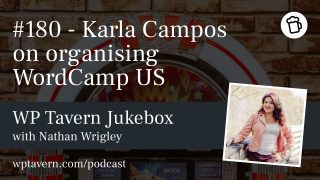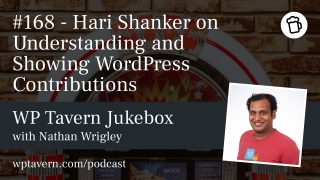Nathan Wrigley hosts Rachel Cherry and Alex Aspinall to discuss WordPress usage in higher education and the newly released “State of WordPress in Higher Education 2025” report. Rachel founded WP Campus, a nonprofit supporting people who use WordPress in colleges and universities. She’s WP Campus Director of Technology and an accessibility developer at the University of Rochester. Alex works at Human Made, an enterprise WordPress agency delivering large-scale platforms; he’s developed a strong interest in higher ed use cases.
WP Campus began a decade ago to create a community focused on WordPress in higher education, offering conferences, research, professional development, resources, and advocacy. The organization aims to provide data and insight so institutions can make informed decisions — for example, WP Campus funded an accessibility audit of Gutenberg. WP Campus membership includes institutions worldwide, with a significant presence in the U.S., UK, and Canada.
Human Made became involved after conversations with WP Campus and collaboration on events. Their enterprise experience and interest in complex multi-site and governance-heavy projects aligned with WP Campus’s community needs, leading to the joint research report.
Key findings from the 2025 report:
– Block editor adoption: Only 40% of respondents use the block editor on all their sites; others use it on some or most, and 16% not at all. Adoption is gradual due to enterprise complexity, governance, training needs, and resource constraints.
– Full Site Editing (FSE): Adoption is much lower. About 62% reported not using FSE at all. Concerns center on governance and control: institutions worry about editors breaking branding or accessibility rules, especially when many content editors are non-technical faculty or staff.
– Resource constraints: Teams are often small relative to the number of sites and users they support. Typical setups can include a web team of a few people managing hundreds of sites. Headcount limitations and budget constraints slow adoption and large changes.
– Scale and multi-site usage: Higher ed often uses multi-site setups and “domain of one’s own” approaches that let departments, labs, or faculty spin up their own sites. This yields hundreds of sites per institution and many varied content types, from marketing brochure sites to research lab blogs and publishing platforms.
– Plugin ecosystem challenges: Bloat and accessibility are top concerns. Institutions frequently build custom solutions because off-the-shelf plugins may not meet accessibility or governance standards. Maintaining custom plugins is costly and time-consuming.
– Satisfaction and retention: Around three-quarters of respondents said WordPress meets or exceeds expectations. When institutions adopt WordPress, many stick with it; 49% said they would not move to another CMS even if they had the time and resources.
– Enterprise feature gaps: Higher ed needs more enterprise-level functionality in WordPress — tools for governance, centralized controls, data sharing, and scalable workflows. The report surfaces these needs to inform developers and vendors.
Context and reasons behind findings:
– Adoption Pacing: Higher ed institutions often align major platform changes with redesign cycles (typically every 3–5 years) to minimize disruption. Implementation requires retraining, updating documentation, and ensuring compliance with accessibility and branding, making changes deliberate and slow.
– Governance and control: Many institutions must enforce accessibility, legal, and brand requirements. Allowing broad editing power via FSE without guardrails risks noncompliance and reputational damage. Institutions need ways to balance editor flexibility with centralized control.
– Accessibility: U.S. institutions face accessibility obligations (e.g., Section 508 when receiving federal funding) though laws are stronger in parts of Europe. Accessibility requirements push teams to custom-build or carefully vet plugins and themes. This often drives custom development to meet standards.
– Variety of use cases: Higher ed combines public-facing marketing sites, internal web applications, archives, publishing sites, student portals, and departmental blogs. WordPress can be extended to many of these use cases, but it may not be the optimal tool for every system; institutions frequently use heterogeneous tech stacks.
Agency involvement and handoff:
– Agencies like Human Made typically work with central web teams and collaborate with other specialists (design, marketing, platform, etc.). Successful projects are collaborative, reflecting institutional structures.
– Handoffs focus on training core web teams rather than every end user. Agencies provide documentation, videos, and follow-up sessions to empower institutional teams. Ongoing one-to-one training for content editors remains necessary, particularly where governance limits editing scope.
Opportunities and calls to action:
– More shared resources and case studies: WP Campus encourages institutions to share successes and roadblocks to help peers evaluate new features. Real-world examples reduce uncertainty and inform risk management.
– Enterprise tooling: There’s an opportunity for plugin and platform developers to build enterprise-focused functionality: governance tools, accessibility-compliant components, scalable provisioning, and solutions for multi-site management.
– Community collaboration: Developers, vendors, and agencies are invited to review the report, join the WP Campus Slack, and engage with the higher ed community to address identified gaps.
Where to learn more and get involved:
– WP Campus (wpcampus.org): join Slack, access the research report, see events, newsletters, and membership information.
– Human Made (humanmade.com): contact for enterprise WordPress services; follow their Word on the Future newsletter for related insights.
– The report is graphical and detailed; readers are encouraged to download it for full charts and data referenced in the conversation.
Conclusion:
The 2025 State of WordPress in Higher Education report paints a picture of cautious, pragmatic adoption. WordPress is valued for extensibility, cost, and multi-site capabilities, but institutional constraints around resources, governance, and accessibility slow rollouts of newer features like the block editor and FSE. There’s appetite for more enterprise-oriented tools and greater sharing of experiences across institutions. WP Campus and partners like Human Made aim to surface needs and foster collaboration so WordPress can better serve the complex, large-scale requirements of higher education.




